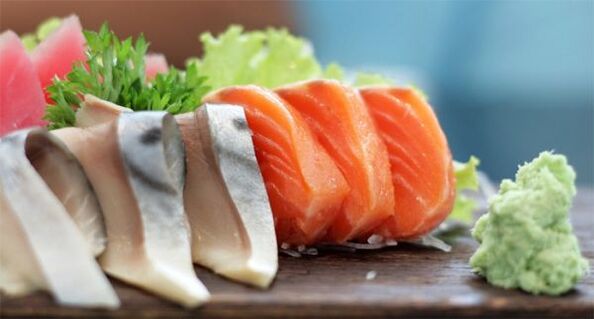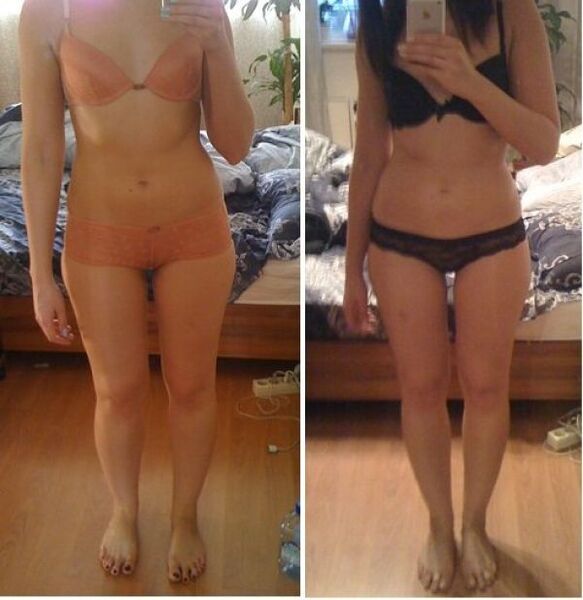Although rolls and sushi seem dietary and low-calorie compared to other foods, the Japanese diet for 14 days is not based on them. Rather, it got its name because its observance requires the endurance and fortitude of a noble samurai. She is really complicated. But the effort is worth it: kilograms are really lost during this diet, and in the future it is easy to switch to a classic healthy diet, which will not allow you to regain the lost.
Japanese weight loss method: menu and recommendations
The Japanese 14-day diet is very strict. It will make you wean yourself from the usual tastes, "cleanse the receptors" and feel the taste of healthy food. Don't look at it as an ordeal or an obstacle to overcome, but as an introduction to something unknown that has existed under your nose all your life.
The main principles of this diet are categorically:
- salt is strictly prohibited, all other spices as well;
- the menu is very strictly regulated. In addition, not only what to eat, but also exactly how much is determined. in grams;
- You cannot replace products even with equivalent analogues, in your opinion;
- It is preferable to use multivitamins during the entire diet, because the body does not get enough of the necessary substances due to the limited range of food products;
- it is forbidden to do active sports in parallel with the diet;
- leaving the diet is carried out according to strict rules. If they are neglected, the body will be under a lot of stress, which can cause problems.
If you follow all the rules, after 2 weeks the size of your stomach will decrease and you will eat less food after leaving the diet. The main thing is to continue eating in moderation so as not to stretch again.
Most likely, you already know what a proper diet is: eating vegetables and diet meat without spices. If you think it's bland and tasteless, the "Japanese" diet will definitely change your opinion. You will begin to taste food that previously seemed disgusting and learn to enjoy the crunch of juicy vegetables.

Recently, mini versions of the Japanese diet have appeared. They are designed for shorter days, so they may seem easier to bear. But that's not the case. After a few days of the "Japanese" diet, the body gets used to it and the food becomes comfortable. That is, the short version of the diet will cause exactly the same discomfort and then end up carrying less weight.
There is another trick. During the first days of the diet, weight is lost mainly due to salt excretion and fluid loss. And only then the stomach decreases and the metabolism changes, which allows you to maintain the obtained shape for a long time. If you stop at removing water and salt, they will simply return to their old place when you go back to your usual way of eating.
Contraindications
The Japanese diet creates extraordinary conditions for the body, due to which it destroys fat reserves. It is not very diverse, and many important substances will be temporarily lacking. Thus, the Japanese diet has contraindications:
- pregnancy and lactation period. The child must receive the necessary substances without restrictions, their lack leads to developmental disorders. Therefore, wait until the baby begins to eat on its own;
- problems with the circulatory system: a heavy load falls on it during a diet;
- digestive and endocrine system diseases.
List of permitted foods
A distinct advantage of the 14-day Japanese diet is that it is inexpensive. All products are sold in every store and are not expensive at all compared to the banned ones.
It is best to go to the store before starting the diet and have a strategic reserve the first time. Those who have tried the described diet say that its initial days are especially difficult to endure, and a visit to a store full of temptations can lead to a breakdown.
By the way, it is dangerous to deviate from the salt-free regime: the body is in an acute salt deficit mode, and it is dangerous to drastically increase its amount.
So here's what you should eat for two weeks:
- Fresh fruits with low sugar content: citrus fruits, green apples, pineapples, plums, cherries and others;
- Fresh vegetables that do not contain starch: white cabbage, carrots, zucchini, eggplant, tomatoes;
- Freshly squeezed tomato juice;
- Crude unrefined olive or sesame oil;
- Yogurt without fillers, kefir;
- Cheese with a minimum fat content, but not salted;
- The meat is extremely lean, fillet without skin. Beef, chicken, fish;
- Eggs. By weight, one chicken egg corresponds to 5 quail eggs;
- Black coffee. You cannot add anything to it, it is not desirable to replace it with a soluble one;
- Tea is also the simplest, most natural;
- Clean drinking water without gas;
- Cookies from slices of wholemeal bread without dried fruit.
By the way, if you add lemon juice to unsalted food, you get a very interesting taste, which will make it easier to wean yourself off spices.

Prohibited products
Strictly speaking, all products not mentioned in the algorithm are prohibited. Just to be on the safe side, we'll determine exactly what's best to take out of the fridge and easily reach before starting to follow the "Japanese" regime.
- Unauthorized vegetables and fruits;
- Island;
- Dairy products;
- Smoked meat;
- Bakery products, sweets;
- Any store-bought beverages, especially alcoholic beverages;
- Flavoring additives.
Full menu
It's hard to forget that the Japanese 14-day diet is one of those really hard to follow. Once you decide to go through it, stick to it for the full duration, don't stop or cut it short.
The algorithm provides for three meals a day without snacks and delicacies (w – breakfast, o – lunch, y – dinner).
- Monday
- h – coffee;
- o – Cabbage salad, 2 eggs, juice from a couple of tomatoes;
- y – 200 g of fish from the steamer.
- tuesday
- h – Coffee and 1 cracker;
- o – Steamed fish, cabbage salad;
- y – 100 g of beef, kefir;
- Wednesday
- h – Coffee and 1 cracker;
- o – a couple of eggplants, stewed with minimal oil;
- y - 200 g of beef from the oven, cabbage salad, a couple of eggs;
- Thursday
- h – Carrot salad;
- o - 200 g of steamed fish, tomato;
- y – sour fruits;
- on Friday
- h – Carrot salad;
- o - 200 g of steamed fish, tomato;
- y – permitted fruits;
- on Saturday
- h – coffee;
- o – Chicken fillet from the oven, carrot and cabbage salad;
- y – 2 eggs, raw carrots;
- sunday
- h – Tea;
- o - 200 g of beef from the oven;
- y - Any offering for this week of your choice, but not fruit.
Dieting can be difficult at first. However, every day the body will get used to and move to a new mode of operation. The food will show its true taste. You will lose the habit of feeling full after eating. The first results of the Japanese diet will become noticeable. This diet does not force you to starve, but gradually reduces the volume of your stomach, preventing you from overeating.
So, you've tasted victory, the work continues. Here is the schedule for the next week (w - breakfast, o - lunch, y - dinner).
- Monday
- h – coffee;
- o – Half a kilogram of chicken fillet from the oven, cabbage and carrot salad;
- y - anything but fruit from last week;
- tuesday
- h – Carrot salad;
- o - 200 g of steamed fish, a couple of tomatoes;
- y – sour fruits;
- Wednesday
- h – coffee;
- o – Carrot salad, egg, slice of cheese;
- y – sour fruits;
- Thursday
- h – Coffee with crackers;
- o – Zucchini from the oven or raw;
- y - 200 g of beef from the oven, cabbage salad, a couple of eggs;
- on Friday
- h – coffee;
- o - 200 g of steamed fish, cabbage salad;
- y – 200 g of beef from the oven, yogurt;
- on Saturday
- h – coffee;
- o – Cabbage salad, 2 eggs, tomato;
- y – 200 g of steamed fish;
- sunday
- h – coffee;
- o – 200 g of steamed fish and cabbage salad;
- y – 200 g of beef and a glass of kefir.
Cabbage salad consists of only 2 ingredients: crispy cabbage and 20 g of oil. Carrot - from carrots and 20 g of butter, respectively.
I would like to note how convenient the Japanese diet is for men. Even those who have no culinary talent at all can cope with cooking their own food without burdening their loved ones with new rules.
Features of following a salt-free diet
During a salt-free diet, the body will be in an unusual, almost extreme state of salt deprivation. This is one of the main secrets of its effectiveness. But for everything to work properly, you must follow important principles:
- Drink as much as possible. You will need to drink at least 2 liters of clean water a day in small portions. If you do 1 glass at a time, you get about 8 approaches.
- It is best to drink the first glass of water in the morning, before breakfast. Better yet, have a couple of tablespoons of fiber with that glass. This is a nutritional supplement sold at any pharmacy. Consuming it regularly in this way will improve bowel function and further increase the effectiveness of the diet.
- Don't go on a diet, even if you think you can. 14 days is the maximum that the human body can survive without sodium chloride.
- It is allowed to gradually introduce salt in the last days of the diet. You cannot immediately salt food to its normal taste; the first time, literally add a few salt crystals and increase the dosage slightly.
- If necessary, coffee can be replaced with tea. But it is better to leave it as it is - coffee normalizes blood pressure and supplies the body with antioxidants.
Giving up the Japanese diet
Within 14 days of careful dieting, you will inevitably lose weight. Now your task is to return the sodium chloride correctly. But it's not just about salt. The rules for the transition from diet to normal life will allow you to maintain your new size for a long time.
- Continue to eat according to the diet algorithm. Add new foods to the menu strictly one at a time.
- Do not increase the portion size. Your stomach tightens a little and it's enough to fill you up. If you overeat, the abdominal walls will stretch again, the stomach will expand and the weight will begin to return.
- Salt is added very carefully. Just a little at first, then gradually return to the normal amount over a few days.
- It is better to refrain from other spices for at least another month. They increase appetite and make it difficult to establish new, healthy eating habits.
Effective diets often make you want to continue or return to them. But you can't do that with the Japanese diet. If you want to prolong the experiment, abandon the diet sensibly, add other vegetables to the menu, diversify the meat dishes, and you can slightly strengthen the breakfast.
Returning to the Japanese diet is allowed only after six months.
Reviews of weight loss results
- "I bravely endured and I'm very proud of myself. By the end of the first week it became a little more familiar, and then everything became easier. The hardest part was not eating cakes and chocolate for so long. Well, I had to get used to small portions. The rest is not scary. And you know, thereit's been a couple of months until i get fat.
- "I discovered this diet when I was preparing for a wedding and couldn't fit into a dress. I managed to lose 10 kg in 2 weeks; no one believed in the success of this experiment until recently! I had a dream dress with a perfect waist for the wedding. By the way, now I have gained only abouta couple of kilograms.
- "I lost weight with 'Japanese' and I didn't think it was that heavy. Lost 7kg. I went from dieting to eating healthier than I was used to and didn't gain weight. After 7 years I got pregnant and of course, I didn't have time for my figure and gained even 13 kg. Now I am breastfeeding and need to eat what suits him. As soon as we stop breastfeeding, I will definitely go through these 14 days of austerity again to get back to my former shape. I trust this diet 100%.















































































